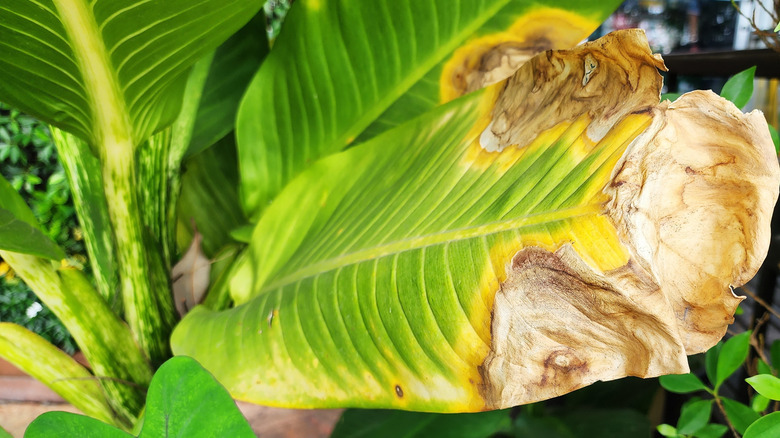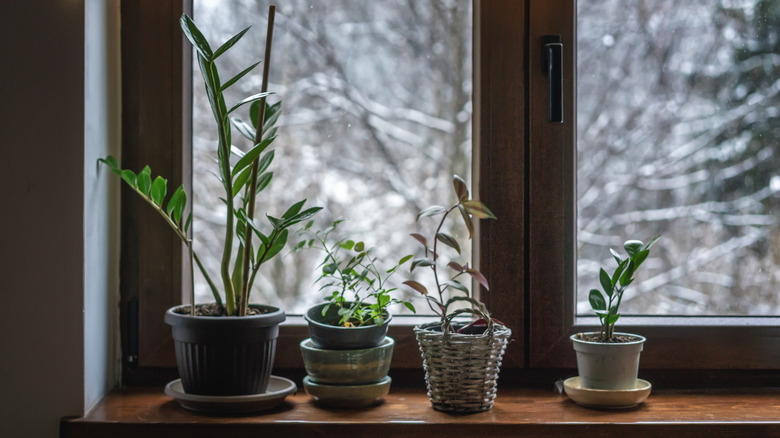Can Houseplants Really Thrive Next To Heaters?
With cooler temperatures on the horizon, many people will be cranking up the heat. But staying nice and toasty inside can present a danger to your beloved indoor plants. During this time of year, most plants are resting, and do not necessarily need as much care as they would in the warmer months. However, there is one secret that gardening experts know and that is houseplants cannot thrive next to a heater.
Most houseplants do well in homes with temperatures ranging from 65 to 75 degrees Fahrenheit. Tropical plants can withstand even higher temperatures — up to 85 degrees – which could lead you to falsely believe that keeping these plants near a heater would be fine. While temperature ranges can vary depending on the unit, many central heaters start by pushing out air that is between 140 to 170 degrees Fahrenheit. As it travels through the system, it will drop by about 50 degrees before dispersing through your home. So, if your plants are located near or adjacent to a vent, they will be hit by very hot, dry air, which can lead to significant health issues or even death.
Why heaters can damage plants
If left near a heating unit, houseplants can suffer from dehydration and scorched leaves, among other issues. The warm, dry air can zap away moisture in the room, causing the plant to lose water and pull moisture from the roots. This can increase the plant's water demand, resulting in dehydration. These problems can be exacerbated when the plant is placed directly on, or very near, the heating vent. This can cause your houseplants to curl or lose their leaves and flowers, wilt, or attract unwanted pests. It could also stunt the plant's growth.
Greenery with thin leaves is even more susceptible to scorching when placed near a heater, furnace, or radiator. The most common signs of stress include brittle and dry, brown ends. It is your plant's way of trying to warn you that its health is in need of attention. The warm air from your central heater is not the only threat to your plants. You may notice brown spots or sunburn if it is placed near a window with too much direct sunlight.
How to care for your houseplants during the cooler months
With cooler days on the way, it is important to prepare your plants for when the heater will be on full blast. While you may be tempted to place your houseplants near air vents and windows for aesthetic reasons, it is best to resist temptation. As previously noted, placing plants near a vent or unfiltered window will cause them to dry out. Move them several inches away or relocate them to high-humidity spots such as a kitchen or bathroom. Heating units can zap moisture in the air, so keep your houseplants thriving in winter by setting up a humidifier. If you do not want to purchase one, alternative options can be filling a bowl with water and setting it next to the furnace for added moisture or simply misting the leaves with a spray bottle.
Even though heat can harm your houseplants, the two can coexist. If they get damaged, you just have to nurse them back to health and find a more suitable location for the colder months. When you see signs of stress, like wilting or curling leaves, immediately give the plant some TLC. This includes relocating it to a cooler room, skipping the fertilizer, pest removal, and overall plant health evaluation. While these are basic steps, every plant requires a different level of attention and maintenance. Remember to read up on your specific plant for the best care strategy.


